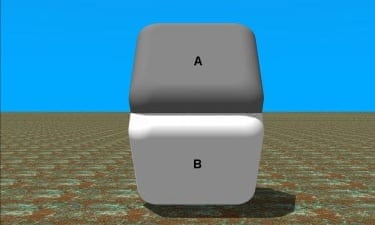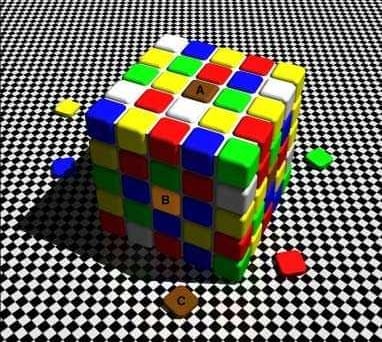Gold and White Blue and Black Dress Illusion
It's not every day that fashion and science come together to polarise the world.
Tumblr blogger Caitlin posted a photograph of what is now known as #TheDress – a layered lace dress and jacket that was causing much distress among her friends. The distress spread rapidly across social media, with Taylor Swift admitting she was "confused and scared".
I don't understand this odd dress debate and I feel like it's a trick somehow. I'm confused and scared. PS it's OBVIOUSLY BLUE AND BLACK
— Taylor Swift (@taylorswift13) February 27, 2015
The internet is now made up by people firmly in two camps: the white and gold, and the blue and black – with each thinking the other is completely wrong.
But Ron Chrisley, director of the Centre for Research in Cognitive Science at the University of Sussex, believes that the problem mainly lies in the fact that everyone has forgotten we are dealing with an illusion.
Chrisley said: "The first step in reaching a truce in the dress war is to construct a demonstration that can show to the white-and-gold crowd how the very same dress can also look blue and black under different conditions."
The image below, tweeted by @namin3485, demonstrates that even though the right-hand side of each image is the same, in the context of the two different left halves, the right is interpreted as being either white and gold, or blue and black.
So does this mean people who are less self-confident are more likely to be able to see both, at least eventually?
Chrisley said: "My guess is it's not to do with self-confidence. It's a perceptual issue. I could imagine someone that's open minded could still see it only one way. This is below the level of us trying to understand other peoples views. It's more physiological than that."
Look at the image below. The colour of surfaces A and B are identical. Place your finger over the join where the top and bottom half of the image meet.

Both surfaces are grey, right? But how?! Why?!
Chrisley said: "Which colour we see isn't just a matter of the light coming into eyes, it's the inferences that caused that input. We use the context to inform our colour experiences.
"Some suffer more than others due to how people factor in context in order to construct a colour experience. Some people see just what's in front of them and some people are affected much more by the context.
"This has yet to be proven, but given what we know of the brain, and it's a good guess, is that someone who is used to manipulating images and white balance might be able to perceive the true dress colour in a wider range of contexts and ignore context, whereas others can be easily manipulated. People who have changed luminance in Photoshop may not be fooled by it."
Take the following colour illusion. Squares A, B and C appear to be different shades of brown. Cover the surrounding squares and you'll see they are in fact the same colour.

Chrisley said: "Another striking thing about the dress illusion is that it is quite unlike the checked shadow illusion, in that not all people experience it, and those that do often do so differently.
"It is as if there is a perceptual equivalent of those who can roll their tongues and those who can't. But it is too early to say whether the difference is genetic, as with tongue rolling ability, or something affected by learning and personality such as being a night-owl or one's particular sensitivity to context in perception, as I and fellow Sackler colleague Acer Chang speculate."
Here's the science behind #TheDress colour illusion
You may have gathered this by now, but what we are experiencing is really a colour illusion. Colour illusions are images where the object's surrounding colours trick the eye into incorrectly interpreting the colour.
What's happening with #TheDress is that your eye is either discounting the blue so you're seeing white and gold, or discounting the gold so your eye sees blue and black. But why would your eyes lie to you like this?
Human beings evolved to see in daylight, but daylight changes the colour of everything we see. Human eyes try to compensate for the chromatic bias of daylight colour.
We see objects because light is reflected. When we look at something, light enters the eye with different wavelengths which correspond to different colours. This light hits the retina in the back of the eye where pigments shoot signals to the part of the brain that processes these signals into an image.
Your brain figures out what colour light is bouncing off the object your eyes are looking at by subtracting that colour from the real colour of the object.
Speaking to Wired magazine, Bevil Conway, a neuroscientist who studies colour and vision at Wellesley College in Massachusetts said: "Most people will see the blue on the white background as blue. But on the black background, some might see it as white."
Source: https://www.theguardian.com/technology/blog/2015/feb/27/science-thedress-colour-illusion-the-dress-blue-black-gold-white
0 Response to "Gold and White Blue and Black Dress Illusion"
Post a Comment